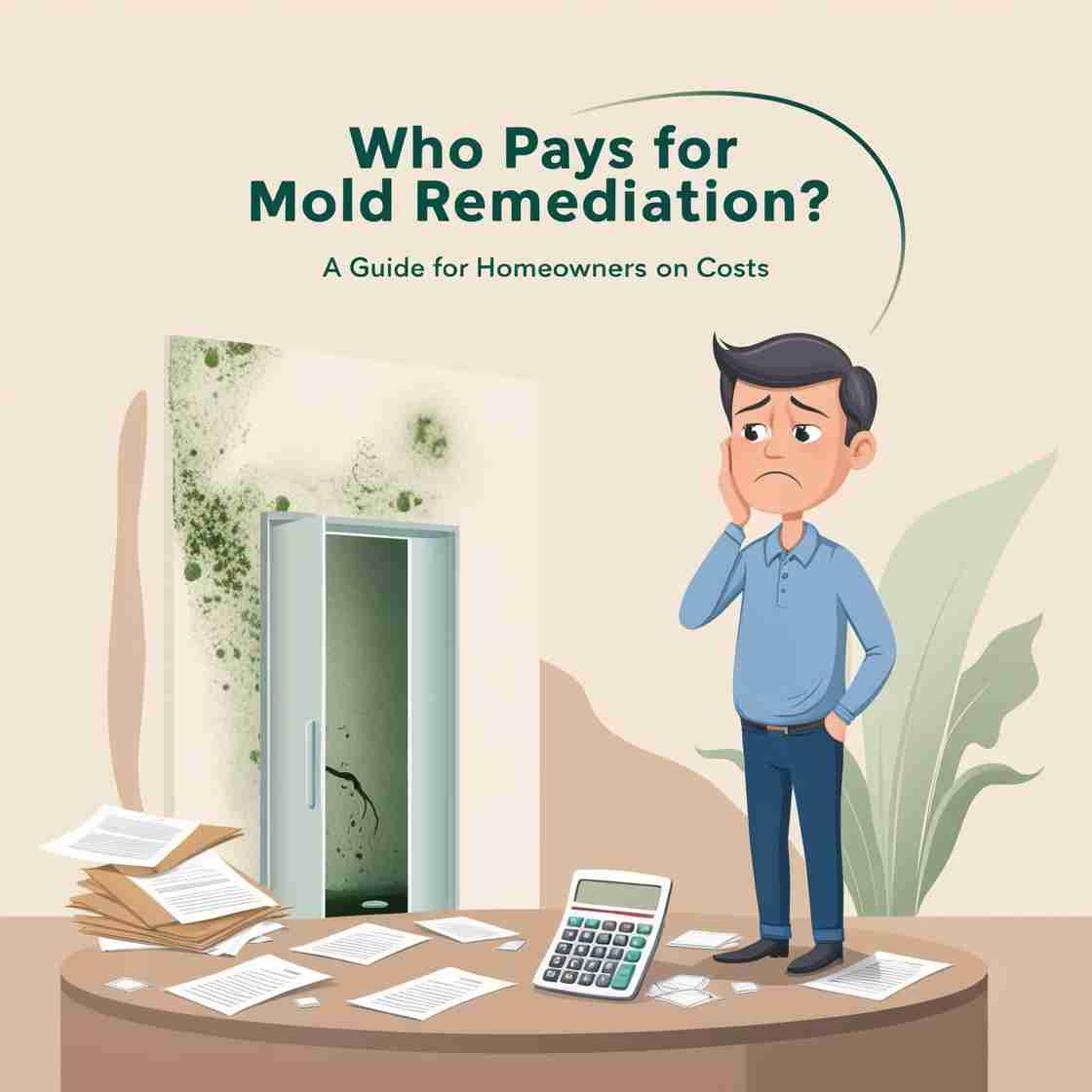Breaking Down Insurance Coverage, Cost Factors, and Prevention Strategies Every Homeowner Should Know
Mold remediation is a critical process for homeowners to ensure their living spaces remain safe and healthy. Understanding who pays for mold remediation, the associated costs, and the insurance coverage can significantly impact your decision-making. This guide aims to clarify these aspects and provide valuable insights into mold issues, allowing homeowners to take informed steps in managing mold growth.
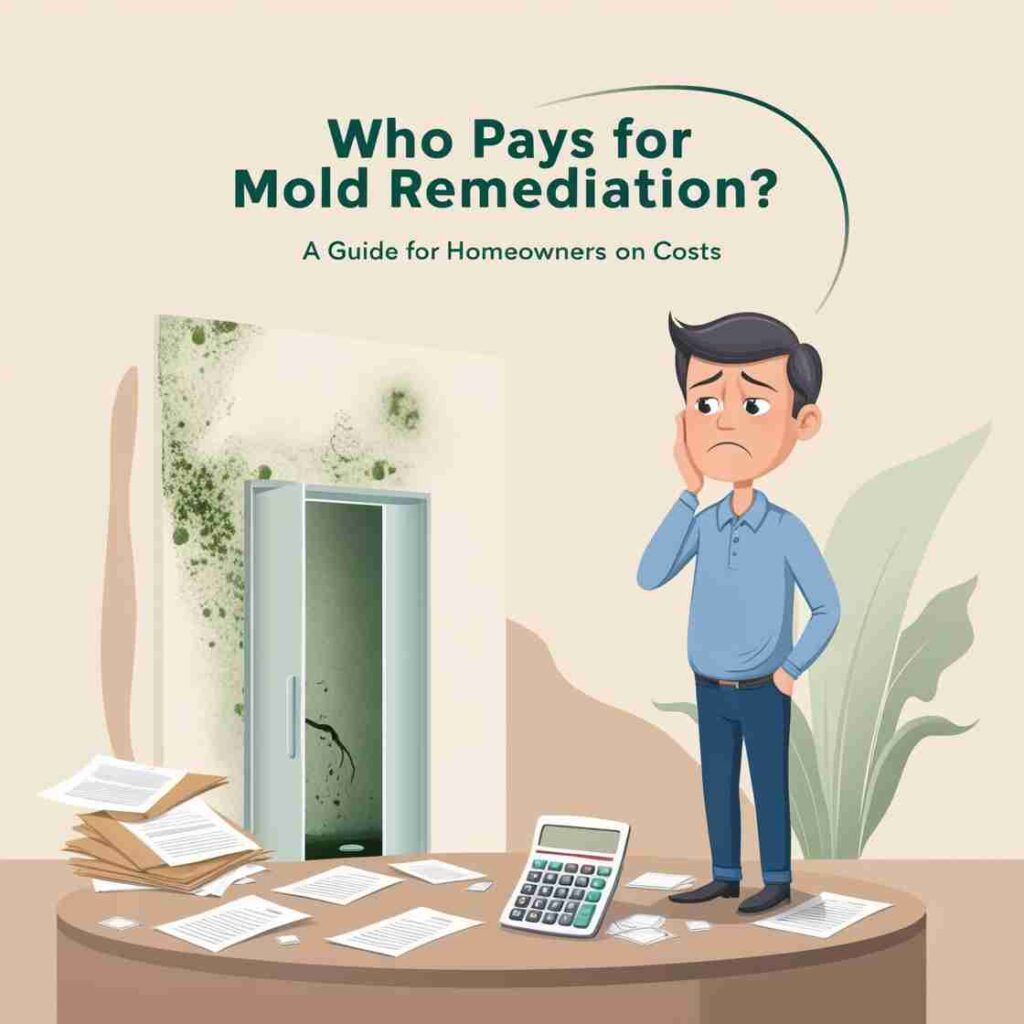
What is mold remediation and why is it necessary?
Understanding mold growth and its consequences
Mold growth occurs when mold spores find a damp environment conducive to their development. The presence of moisture, often due to water damage or leaks, is a primary catalyst for mold infestation. Mold can cause various health issues, particularly respiratory problems, allergic reactions, and skin irritation. Furthermore, prolonged mold exposure can lead to structural damage in a home, creating a need for extensive mold remediation services to remove the mold and restore the property. Thus, understanding the necessity of mold remediation is essential for homeowners to maintain a safe living environment.
In addition to health risks, mold can compromise the integrity of a home, making it crucial to address mold issues promptly. Ignoring mold growth can lead to severe consequences, including increased remediation costs and potential liability issues for homeowners. By recognizing the importance of timely mold removal, homeowners can protect their families’ health and their property’s value. Therefore, mold remediation is not merely a cosmetic concern; it is a fundamental aspect of maintaining a healthy and secure home.
Signs of a mold problem in your home
Identifying the signs of a mold problem is the first step in addressing mold infestation. Common indicators include a musty odor, visible mold growth on surfaces, and water stains on walls or ceilings. Homeowners should also pay attention to increased allergy symptoms among family members, which may signal mold exposure. It is essential to conduct regular mold inspections to catch mold issues early and remediate the mold before it spreads further. Recognizing these signs quickly can save homeowners from extensive damage restoration efforts in the future.
Furthermore, homeowners should be vigilant about inspecting less visible areas, such as attics, basements, and behind appliances, where mold growth can often go unnoticed. Taking proactive measures to identify mold problems can significantly reduce the costs associated with mold remediation. By educating themselves about the signs of mold, homeowners can act swiftly to mitigate any potential mold damage and ensure their living environment remains healthy and safe.
How to identify the type of mold
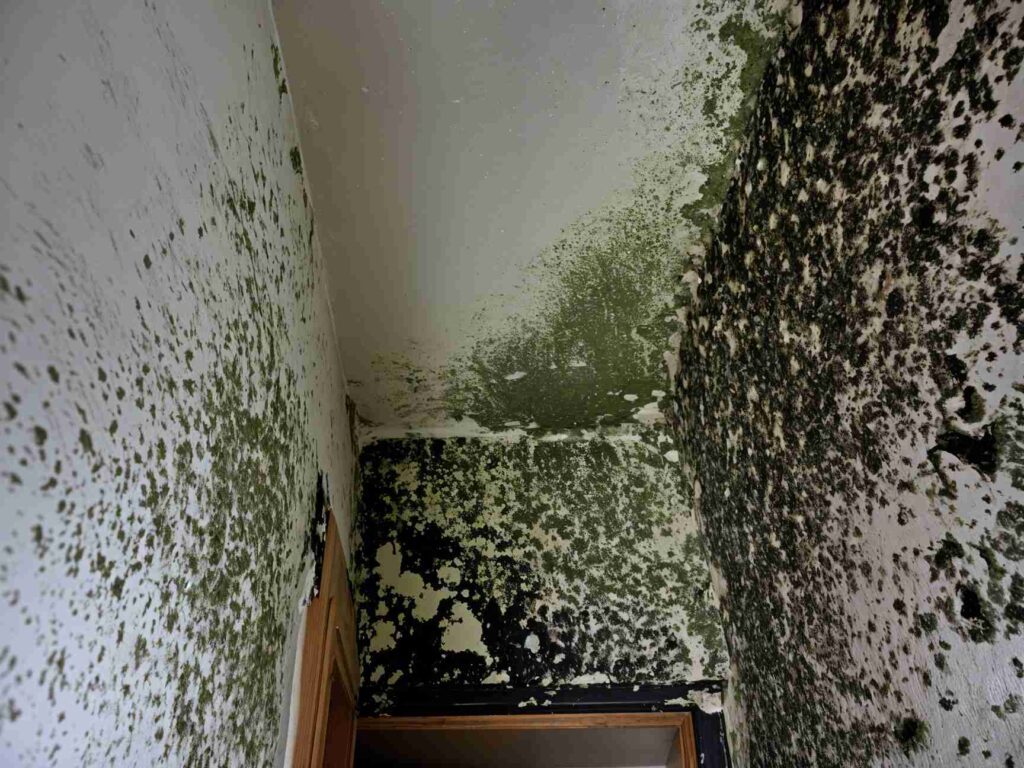
Identifying the type of mold present in your home is crucial for effective mold remediation. Different types of mold, such as black mold and other varieties, may have varying health impacts and require different remediation strategies. Homeowners can collect samples of suspected mold and send them to a professional lab for analysis. This step not only helps in determining the type of mold but also aids in understanding the extent of the mold infestation. Additionally, hiring a mold inspector can provide valuable insights into the presence of mold spores in the air and potential hidden mold sources.
In some cases, visual identification may suffice for common molds, but professional advice is often necessary to ensure thorough remediation. Knowing the type of mold can also influence the costs associated with mold removal and the need for specialized remediation services. By understanding the specific mold issues in their home, homeowners can better plan their remediation process and potentially reduce the overall costs of addressing the mold problem.
How much does mold remediation cost?
Factors that influence the cost of mold remediation
The cost of mold remediation can vary significantly based on several factors. Key determinants include the extent of the mold infestation, the type of mold, and the location of the mold within the home. More extensive mold growth typically incurs higher remediation costs due to the increased labor and materials required to remove the mold effectively. Additionally, if the mold is located in hard-to-reach areas, such as behind walls or beneath flooring, the costs can escalate as remediation companies may need to employ specialized techniques to access these locations.
Other influencing factors include the necessary damage restoration services, such as repairing water damage or replacing materials affected by mold. Homeowners should also consider the qualifications and experience of the remediation company, as professional mold remediation services may charge higher fees for their expertise. By understanding these variables, homeowners can prepare for the potential costs associated with mold remediation and make informed decisions regarding their options for removing mold from their homes.
Average remediation costs based on severity
Average remediation costs can vary widely depending on the severity of the mold problem. Minor mold issues may cost homeowners between $500 and $1,500 to remediate, while more severe cases can range from $2,000 to $6,000 or more. The extent of the mold growth, the type of mold involved, and the underlying causes, such as water damage, all play significant roles in determining the final cost of mold remediation. Homeowners should be aware that costs can rise if extensive repairs or ongoing moisture control measures are necessary to prevent future mold growth.
Moreover, it is essential to obtain multiple quotes from different remediation companies to ensure a fair assessment of the expected costs. A comprehensive inspection can help identify the severity of the mold issue and provide a clearer estimate of remediation expenses. By understanding the average costs associated with various levels of mold severity, homeowners can better plan their budgets and ensure they allocate sufficient funds for effective mold removal.
Additional expenses during the remediation process
In addition to the primary costs associated with mold remediation, homeowners should be prepared for additional expenses that may arise during the remediation process. These can include costs for moisture control measures, such as dehumidifiers, and repairs to damaged areas caused by mold or water damage. If extensive structural repairs are necessary, such as replacing drywall or flooring, these costs can add significantly to the overall expense of mold remediation. Homeowners may also need to consider the cost of mold inspection services before and after remediation to verify the effectiveness of the mold removal efforts.
Furthermore, if mold is discovered in hidden areas, such as crawl spaces or behind walls, additional labor costs may incur due to the need for specialized equipment and techniques to access these locations. Homeowners should also factor in the potential cost of temporary relocation during the remediation process if the infestation is extensive. By being aware of these potential additional expenses, homeowners can better prepare for the financial implications of addressing mold issues in their homes.
Does homeowners insurance cover mold remediation?
Understanding insurance policies regarding mold
Homeowners insurance policies regarding mold coverage can vary significantly, making it essential for homeowners to thoroughly understand their specific policy details. Many standard homeowners insurance policies offer limited coverage for mold damage, often only covering mold remediation costs if the mold is a result of a covered peril, such as water damage from a burst pipe. However, mold damage resulting from negligence, such as a long-term leak, may not be covered, leading to potential out-of-pocket expenses for homeowners. Therefore, it is crucial for homeowners to review their insurance policies to comprehend what is covered regarding mold remediation.
In some cases, homeowners may need to purchase additional endorsements or specific mold coverage riders to ensure they are adequately protected against mold-related expenses. Engaging with an insurance agent can provide clarity on the specifics of coverage and necessary steps to secure additional protection. By understanding the nuances of their insurance policies, homeowners can make informed decisions about their coverage regarding mold and avoid unexpected costs in the event of a mold infestation.
What is typically covered by insurance?
Typically, insurance coverage for mold remediation varies based on the policy and the cause of the mold growth. Most homeowners insurance policies cover mold damage that arises from a covered peril, such as sudden water damage from a storm or a plumbing issue. However, coverage for mold resulting from poor maintenance or prolonged moisture may not be included. It is important for homeowners to clarify their specific policy’s terms regarding mold to determine what is typically covered. This understanding helps homeowners avoid financial surprises during mold remediation.
In some cases, policies may provide limited coverage amounts for mold remediation, necessitating homeowners to be aware of these caps when planning for potential expenses. Additionally, homeowners should consider the possibility of filing an insurance claim for mold damage, which typically requires documentation of the damage and any remediation efforts undertaken. By being well-informed about what is typically covered by insurance, homeowners can navigate the financial aspects of mold remediation more effectively.
How to file an insurance claim for mold damage
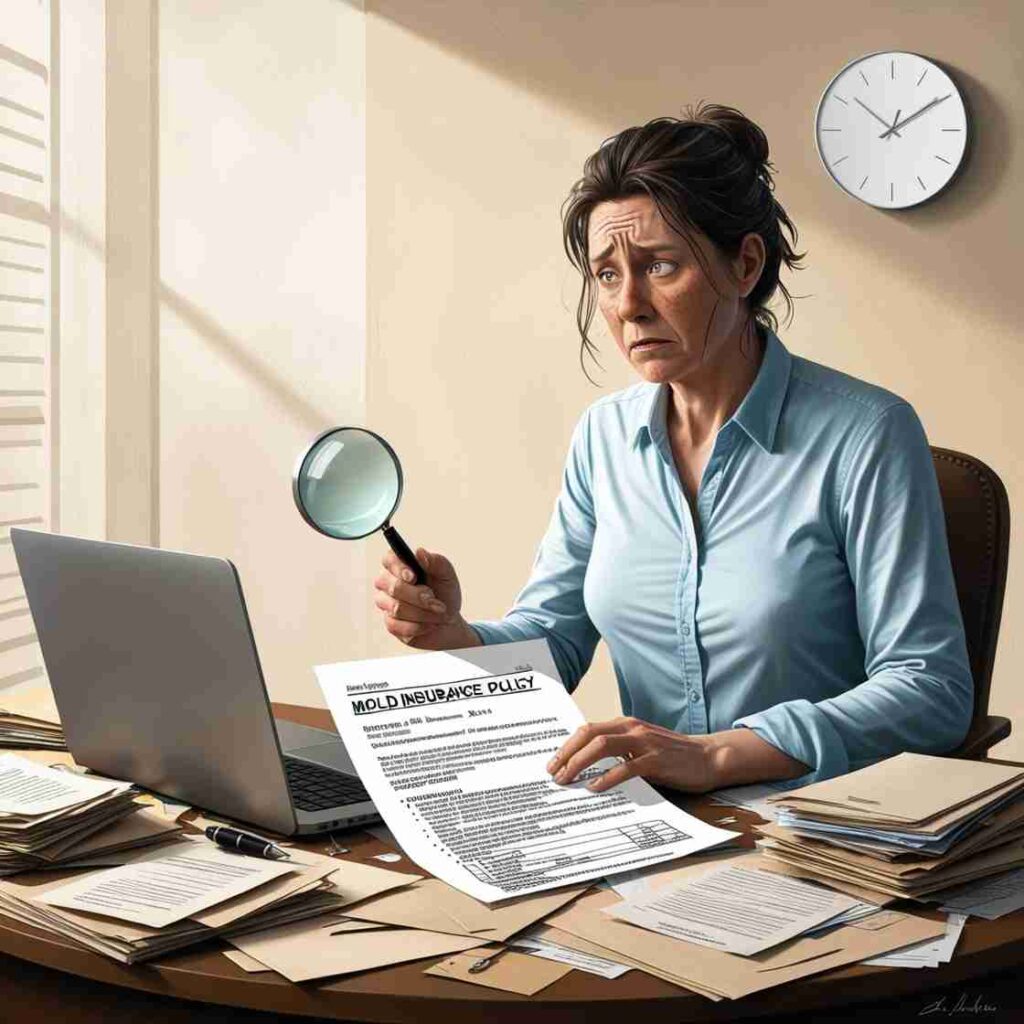
Filing an insurance claim for mold damage involves several critical steps to ensure a successful outcome. Homeowners should begin by documenting the mold damage with photographs and detailed notes regarding the extent and nature of the mold infestation. This documentation is vital when submitting a claim to the insurance company, as it provides evidence of the issue. Next, homeowners should contact their insurance company to report the mold damage and initiate the claims process.
It is essential to understand the specific requirements of the insurance company, including any necessary forms and deadlines for filing the claim. Homeowners may be required to obtain a mold inspection report from a certified professional to substantiate the claim. Once the claim is submitted, it is important to follow up regularly with the insurance company to track the status of the claim and provide any additional information they may require. By following these steps diligently, homeowners can increase their chances of receiving coverage for mold remediation expenses through their insurance policy.
Who is responsible to pay for mold remediation?
Homeowner vs. insurance company: Who is responsible for mold?
Determining who is responsible for paying for mold remediation often hinges on the circumstances surrounding the mold growth. Homeowners may be responsible for remediation costs if the mold issue arises from their negligence, such as failure to address a persistent leak or inadequate maintenance. However, if the mold growth results from a covered peril under the homeowners insurance policy, the insurance company may bear the financial responsibility for the mold remediation costs. It is vital for homeowners to understand the conditions of their insurance policy and how it relates to mold issues.
Furthermore, homeowners should be proactive in maintaining their property to avoid situations that could lead to mold growth and potential liability. Regular inspections and timely repairs can help mitigate the risk of mold infestations and the associated costs. If mold problems arise, homeowners should assess the cause and engage with their insurance company to clarify coverage options available to them. By understanding their responsibilities, homeowners can better navigate the complexities of mold remediation costs.
When a remediation company takes charge
When a remediation company takes charge of the mold remediation process, they assume responsibility for effectively managing the mold removal and restoration. The company will typically conduct a thorough inspection to assess the extent of the mold infestation and identify the source of moisture contributing to mold growth. Based on their findings, the remediation company will develop a comprehensive plan to remove the mold and prevent future growth. Their expertise can be invaluable in navigating the complexities of the remediation process, ensuring that all necessary steps are taken to restore the home to a safe condition.
Additionally, a professional mold remediation company will handle the logistics of the process, including obtaining necessary permits, adhering to safety protocols, and ensuring compliance with local regulations regarding mold removal. Homeowners should feel confident in the remediation company’s ability to address the mold issue efficiently and effectively. By entrusting the mold remediation process to qualified professionals, homeowners can focus on other aspects of their lives while ensuring their home is free from mold hazards.
Understanding liability in rental properties
Liability regarding mold remediation in rental properties can be complex, often depending on local laws and the lease agreement specifics. Typically, landlords are responsible for maintaining a habitable environment, which includes addressing any mold issues promptly. If mold growth occurs due to structural problems or water damage that the landlord should have addressed, they may be liable for the costs of remediation. However, if tenants contribute to mold growth through negligence or failure to report leaks, they may bear some responsibility for the remediation costs.
It is crucial for both landlords and tenants to clearly communicate regarding mold issues and to document any occurrences of mold in the property. Tenants should promptly report any signs of mold to their landlord, while landlords should respond swiftly to any reports of mold to mitigate potential liability. Understanding these dynamics can help both parties navigate the responsibilities associated with mold remediation in rental properties, ensuring a healthier living environment for tenants while protecting the landlord’s investment.
How to prevent mold growth in your home?
Tips for proper ventilation and humidity control
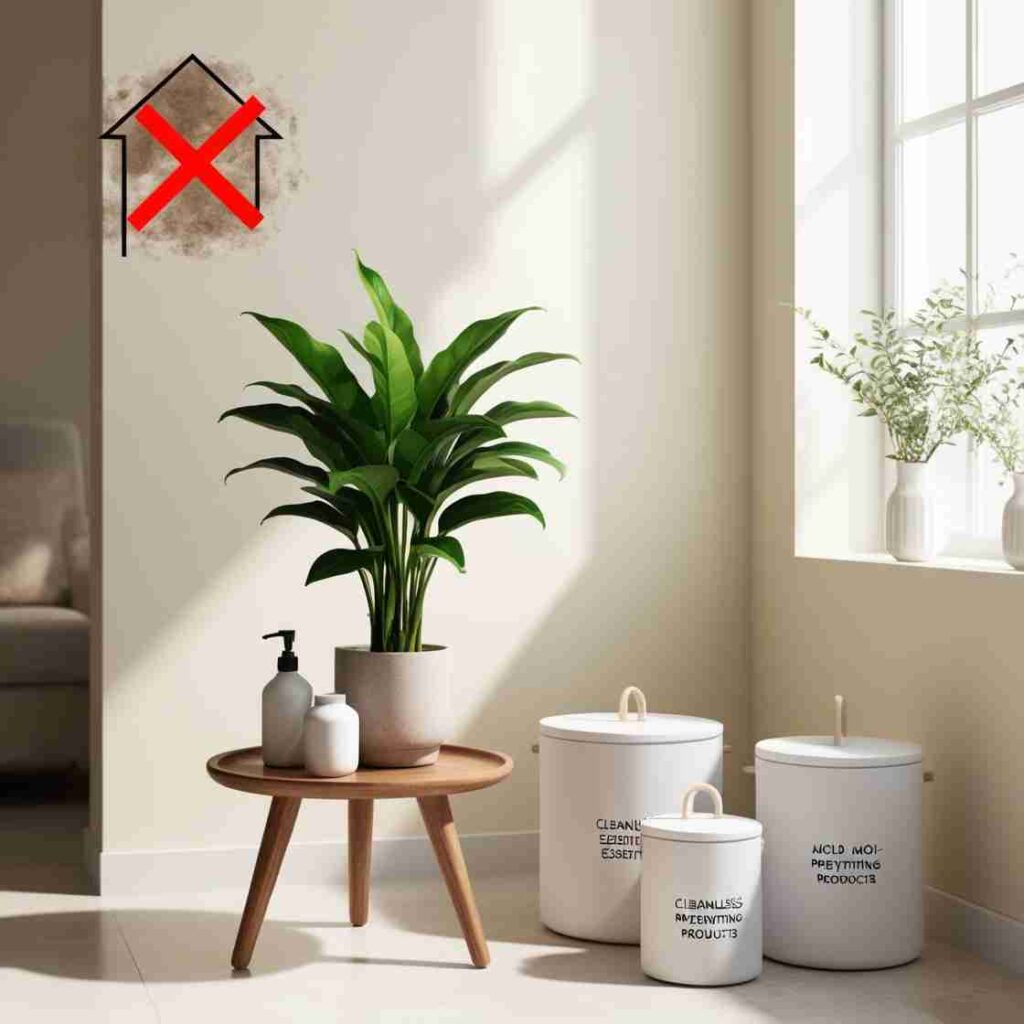
Proper ventilation and humidity control are essential in preventing mold growth in homes. Homeowners should ensure that areas prone to moisture, such as bathrooms and kitchens, are adequately ventilated to reduce humidity levels. Installing exhaust fans or opening windows during activities that generate moisture, such as cooking or showering, can significantly lower the likelihood of mold infestation. Additionally, maintaining indoor humidity levels below 60% can help inhibit mold growth, making it essential to use dehumidifiers in damp areas of the home.
Furthermore, homeowners should regularly check and maintain their HVAC systems to ensure they are functioning efficiently and effectively controlling humidity levels. Routine maintenance can prevent moisture buildup and reduce the risk of mold issues. By implementing these ventilation and humidity control measures, homeowners can create a less hospitable environment for mold spores, ultimately protecting their homes from potential mold problems.
Regular mold inspection practices
Implementing regular mold inspection practices is vital for homeowners to catch mold issues before they escalate. Conducting thorough inspections of basements, attics, and areas around windows and doors can help identify potential moisture problems that may lead to mold growth. Homeowners should also pay attention to any signs of water damage, such as discoloration or stains, which may indicate hidden mold infestations. Hiring a professional mold inspector periodically can provide an expert assessment of the home’s condition and any necessary remediation steps.
Additionally, regular inspections should be part of a broader home maintenance routine to ensure that any potential issues are addressed promptly. Documenting inspection findings can help homeowners track any changes over time and identify trends that may require further attention. By integrating regular mold inspection practices into their home upkeep, homeowners can proactively address mold risks and maintain a safe living environment.
Common causes of mold and how to avoid them
Understanding common causes of mold is crucial for homeowners looking to prevent mold growth in their homes. Primary causes include excessive moisture from leaks, poor drainage, and high humidity levels. Homeowners can mitigate these risks by promptly addressing any plumbing issues and ensuring proper drainage around the property. Additionally, they should regularly check for signs of water intrusion and take swift action to repair any leaks or damage.
Furthermore, maintaining proper ventilation throughout the home can help reduce moisture levels and discourage mold growth. Homeowners should also be cautious about using carpets in high-moisture areas, as carpets can trap moisture and create an environment conducive to mold. By being aware of these common causes of mold and taking proactive measures to address them, homeowners can effectively reduce the risk of mold issues in their homes.
What steps to take if you discover mold infestation?
Immediate actions to remove mold
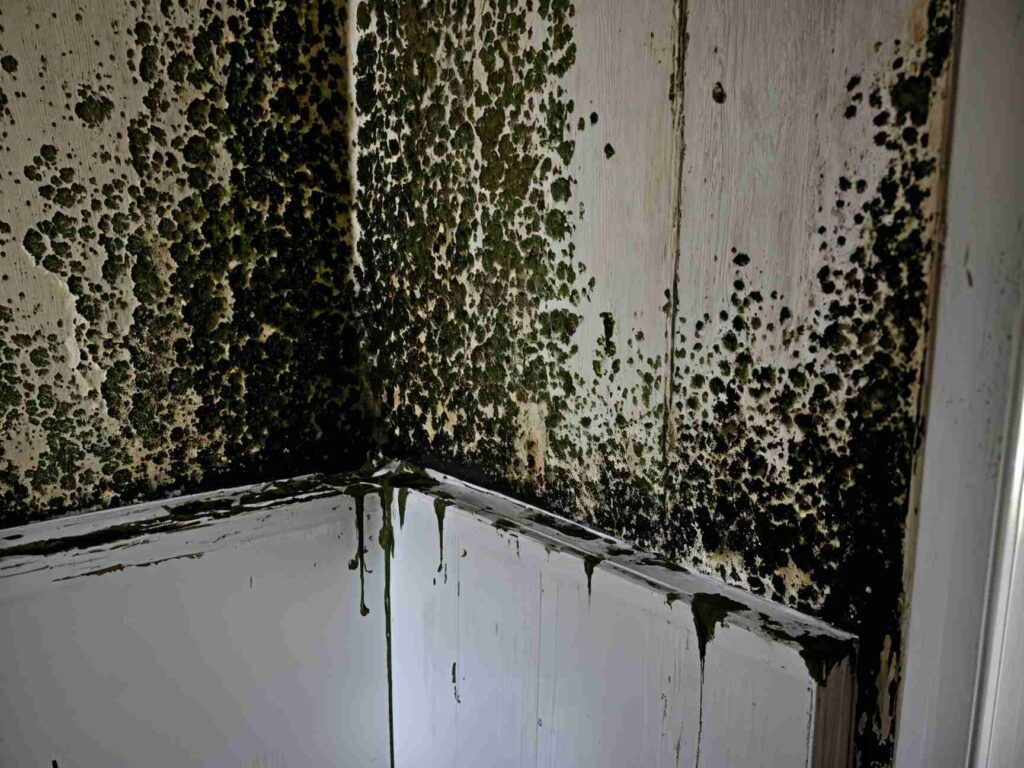
Upon discovering a mold infestation, homeowners should take immediate actions to remove the mold and mitigate its effects. First, it is essential to identify and address the source of moisture contributing to the mold growth. This may involve fixing leaks, improving ventilation, or using dehumidifiers to lower humidity levels. Once the moisture issue is resolved, homeowners can begin the mold removal process by wearing protective gear, such as gloves and masks, to prevent exposure to mold spores.
Homeowners can clean small areas of mold growth using soap and water or specialized mold removal products. However, for larger infestations, it is advisable to contact a professional mold remediation service to ensure thorough removal and avoid further contamination. Taking immediate action is critical in preventing the mold from spreading and causing additional damage to the home.
When to hire a professional mold remediation service
Homeowners should consider hiring a professional mold remediation service when dealing with significant mold infestations or when mold is found in hard-to-reach areas. Professional mold remediation services have the expertise and equipment to handle extensive mold problems effectively and safely. If the mold growth is widespread or if black mold is suspected, it is crucial to engage professionals to manage the situation. They can conduct thorough inspections, assess the extent of the mold damage, and develop a comprehensive remediation plan.
Additionally, professional services can provide valuable advice on preventing future mold growth and address underlying moisture issues. Homeowners should not hesitate to seek professional assistance if they are uncertain about the safety of their home or if mold reoccurs despite their efforts to remove it. Hiring a qualified mold remediation service can save homeowners time, money, and health risks associated with mold exposure.
Long-term strategies to get rid of mold
To achieve long-term success in getting rid of mold, homeowners must adopt comprehensive strategies that address both the existing mold problems and the underlying causes of mold growth. Regular inspections and maintenance routines are crucial in identifying potential issues before they escalate into significant mold infestations. Additionally, homeowners should implement moisture control measures, such as using dehumidifiers, ensuring proper drainage, and maintaining adequate ventilation throughout the home.
Furthermore, when remediating mold, it is essential to repair any water damage and replace materials affected by mold, such as drywall or flooring, to prevent mold from returning. Homeowners should also educate themselves about mold prevention techniques and remain vigilant in monitoring their homes for any signs of moisture or mold growth. By taking these proactive steps, homeowners can effectively manage mold issues and create a healthier living environment for themselves and their families.
Once you suspect mold in your home, immediately consult with a Mold Remediation Hotline professional for a thorough inspection and appropriate remediation plan by calling 332-220-0303.

